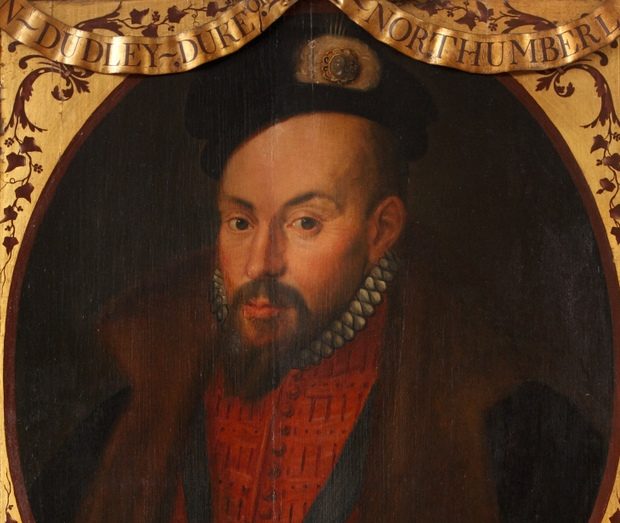
Woof. John Dudley was an ambitious and talented man who rose from being the son of a disgraced traitor (his father Edmund Dudley, was executed by Henry VIII – read the story here) to become Lord Admiral of England during Henry’s waning years, a post he discharged effectively and well. He and Edward Seymour were friends, and Dudley became Earl of Warwick in 1547 when Edward VI came to the throne. Then somewhere between 1547 and 1551, Warwick started to work to supplant Somerset.
The real cynics say he started immediately – by stirring up trouble between Somerset and his younger brother Tom Seymour, who had been put on the Council when Henry died but had only received a Barony (which was still a step up from his previous nothing!). The more charitable say that Warwick didn’t start to try for power until Somerset’s policies had proved disastrous (as the Council saw it anyway…though they were less upset with him over his failed policy in Scotland than they were over his anti-enclosures stance which in their view had encouraged rebellion). Regardless, he was still successful pretty quickly.
By October 1, 1549, Somerset knew his “regime” faced a serious threat – and decided to handle it by grabbing the young king and heading to Windsor Castle. This only served to unite the Council, who published details of Somerset’s mismanagement and asserted that the Protector’s power came from them and not from Henry VIII’s will. The King was rescued and brought to Richmond Palace, Somerset was arrested (the charges, summarized by Edward VI in his Chronicle, were “ambition, vainglory, entering into rash wars in my youth, enriching himself of my treasure, following his own opinion and doing all by his own authority etc..”). It was at this point that Warwick emerged from the shadows as the leader of the Council…. He had Somerset released from the Tower – even allowed him to be restored to the Council and arranged a marriage between their children, but that didn’t last long.
Somerset was not happy with the change in power; that much is clear. It is less clear what he did – or tried to do – about it. Did he intrigue against Warwick’s policies? Yes. Did he wish him dead? Yeah. Did he intend to do anything to make that wish a reality? I don’t think so, though Warwick claimed he did. Regardless, Warwick’s star was on the rise: he became Duke of Northumberland in October 1551 (October 11, to be exact – hence this post!)…and within three months had trumped up enough charges to have Somerset executed.
I’m going to stop the story there…at his moment of triumph. It did go downhill after that, as the Dudley family had the dubious distinction of housing a traitor in all four generations during the Tudor era (Edmund Dudley, a minister of Henry VII, was executed by Henry VIII upon his accession; John Dudley and Guildford Dudley were both executed by Mary I; then Robert Devereux, Second Earl of Essex, who was not a Dudley by birth but became Robert Dudley’s stepson…). But today was a good day for the Dudleys…
***
If you like my posts, you’ll love my books! My Seymour Saga trilogy tells the gripping story of the short-lived dynasty that shaped the Tudor Era. Jane the Quene skews romantic, The Path to Somerset is pure Game of Thrones (without the dragons), and The Boy King is a noir coming-of-age. Get them now through Amazon, Barnes & Noble, Kobo, and Apple, or even your local independent bookstore!

(PS Already read them? Did you love them? Then please review them – even just a stars rating! It makes a huge difference in helping new readers find them and would mean the world to me!)
Be First to Comment